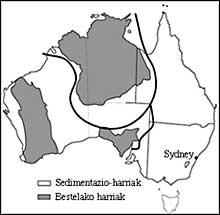Underground electric currents
The world's longest underground electric current has been found in Australia. The current passes through the sedimentation rocks and is 6,000 km. So far, the Wyoming current between Canada and the US was considered the longest, with a length of 4,000 km.

François Chamalaun, of the University of Flinders, has discovered this current and affirms that other similar currents can be in other continents. These currents are born from the collision of land masses hundreds of millions of years ago. According to Chamalaun, the current is generated by the variable magnetic field of the earth.
Around this discovery, Australia's Office of Mineral Resources has developed the largest geo-magnetic program in Australia's history. For this purpose they have been placed forming a network of 54 highly sensitive magnetometers. These devices have detected an underground electric current between 15 and 45 km deep. It has a width between 50 and 200 km.
The current enters Broome, northwest of Australia, moves south and then turns north and leaves Queensland, on the Gulf of Carpentaria. A branch of the main stream begins in Bidsville and reaches the Gulf of Spencer to the south.
The current flows between the fractures between the rocks. These fractures occurred when large masses of land collided with each other and contain alkaline fluids, which are very good conductors. The current is very weak and would not give the necessary power to light a lamp, but would provoke the formation of oil or gas bags.





